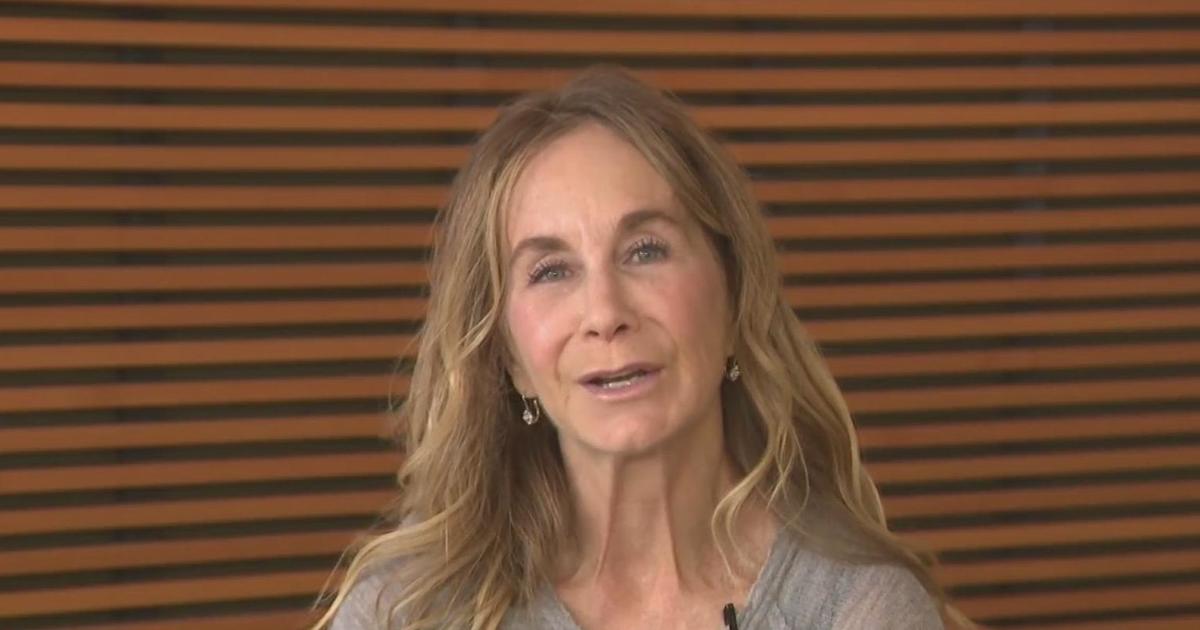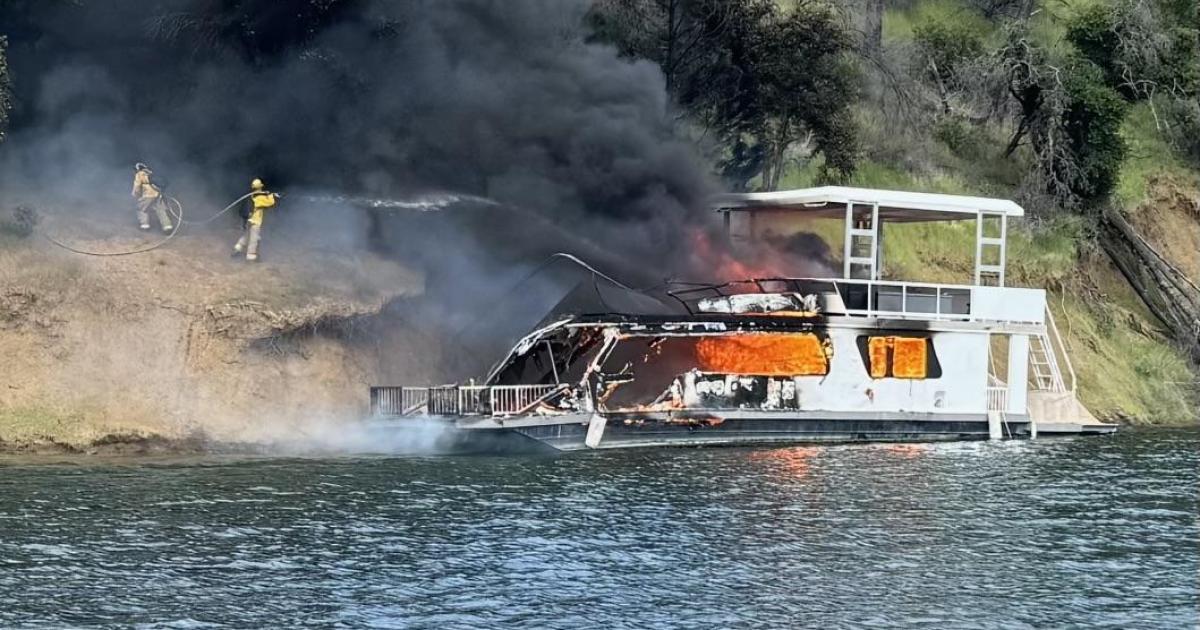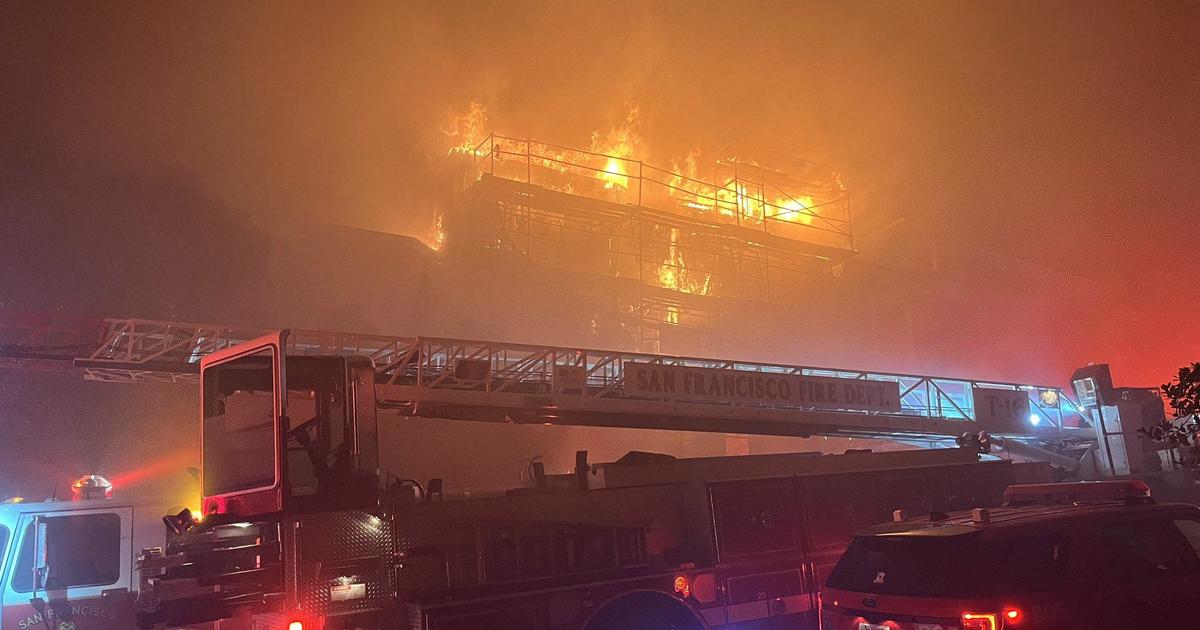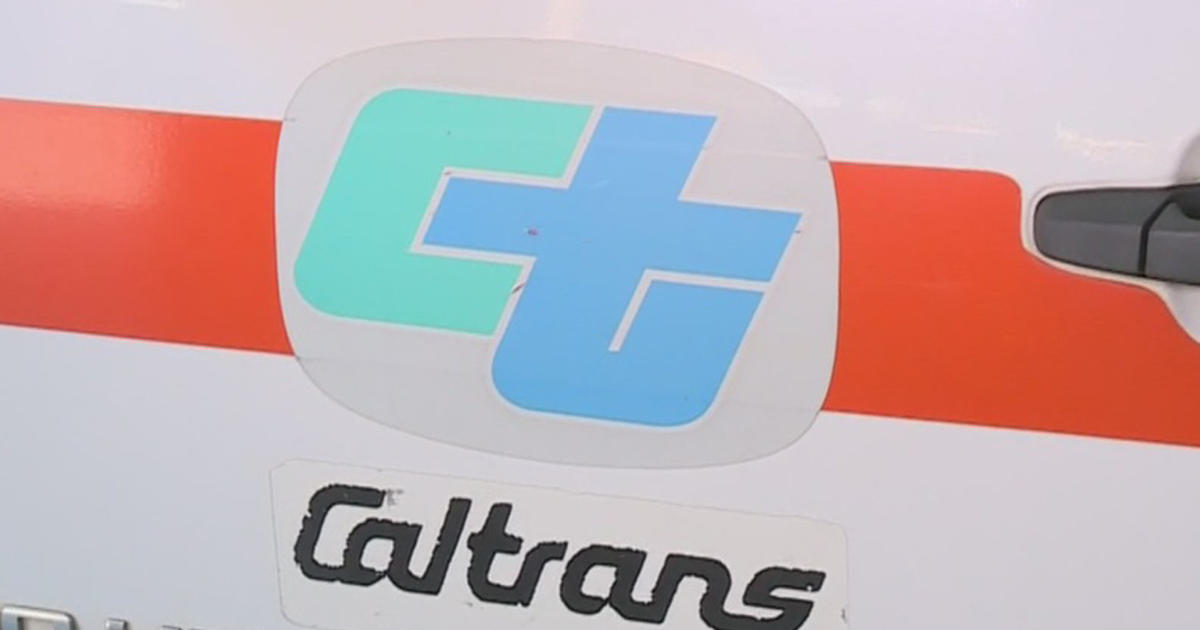Uncertainty Widespread Over Eviction Ban Expiration, Even After Bill's Passage
SAN FRANCISCO (CBS SF) -- Tuesday is full of uncertainty for thousands of renters across the North Bay and beyond as a statewide temporary ban on evictions expires at midnight.
In Marin County alone, Superior Court officials have suggested that as a result, 100 to 200 unlawful detainers—which initiate the court process to evict a tenant—will be processed in September starting Wednesday.
That's up from about 20 a month in pre-COVID-19 times, said Lucie Hollingsworth, senior attorney of the housing unit at Legal Aid of Marin.
"We are definitely looking at mass displacement," Hollingsworth said.
The expiration of the state Judicial Council's eviction ban—which took effect April 6 -- has tenants and their advocates around the North Bay scrambling, and warning in dire terms of what they fear is to come.
"We're unfortunately bracing for an avalanche of evictions," said Michael Stanford, a Sonoma County Tenants Union organizer and board member.
Tenant advocates do say a last-minute bill passed by the state Legislature Monday—widely described as a stopgap measure that will almost certainly be revisited in early 2021 -- will provide some bulwark against a flood of evictions, though not as much as they had hoped for.
Under the bill, Assembly Bill 3088, tenants who incurred rental debt from March through Aug. 31 for COVID-19-related reasons are protected from eviction but have to start paying a portion of their rent in September.
Tenants who attest under penalty of perjury that they have been impacted by COVID-19 have to pay at least 25 percent of rent they owe starting Sept. 1 and until Jan. 31, 2021.
If they don't, they could be evicted starting in February. And in February, tenants have to start paying their full rent. Also, starting March 2021, landlords can sue in small claims court to try and recover any rent owed them dating from the start of the pandemic.
"It won't stop the wave of evictions," Hollingsworth said of the bill, adding, "It's a temporary fix that will stop some nonpayment evictions."
The bill also extends to small landlords—those who own four or fewer units—some new protections against foreclosure.
Tenants would have to take additional steps to prove financial hardship if they make more than $100,000 or more than 130 percent of the area median income.
Also, under the bill, unpaid rent from between April and Jan. 31, and rental debt accrued over the 25 percent that is due between September and Jan. 31, is treated as consumer debt. That means a landlord could seek repayment in small claims court but could not evict a tenant because of that debt alone.
"That's a huge positive," said Pablo Zatarain, executive director of Fair Housing Napa Valley.
But Zatarain said that the degree to which the bill slows the feared increase in overall evictions is yet to be revealed.
"We do anticipate there to be a surge initially and the length and breadth of that surge remains to be seen," he said.
Gov. Gavin Newsom signed AB 3088 Monday and it took immediate effect.
"Absolutely you'll hear from some, not just those representing tenants...that will express that we could have done more, done better," Newsom said in a Friday news conference after the announcement of the bill, which emerged from lengthy negotiation between landlord, tenant and banking representatives.
"But the totality and the consequence of what we were able to achieve in terms of mitigating the prospects of millions, literally millions of people being evicted or at least subject to eviction, substantially was mitigated because of this effort," Newsom said.
The degree to which that mitigation will take place is not yet known. In the short term, a lot also depends on local regulations. Like counties nationwide, Sonoma, Napa, Marin and Solano, with the pandemic underway, adopted their own temporary ordinances banning evictions of people who could prove their inability to pay rent was due to COVID-19.
AB 3088 prohibits counties and cities that passed local eviction bans from renewing or extending them this year as they relate to non-payment of rent due to COVID-19.
But as the Judicial Council's ban expires, those ordinances, while they last, are a last line of defense for tenants for whom the pandemic and accompanying economic crisis have dug a deep financial hole.
One marker of how deep that hole is: a U.S. Census Bureau survey intended to gauge the effects of COVID-19 found that 3.8 million tenants in the state had little or no confidence they could make next month's rent. The survey also found that 15 percent of California renters didn't make rent in July or had deferred payments.
Ahead of Tuesday, tenant organizers and advocates have been holding tenant rights workshops, giving counseling and legal assistance to tenants facing eviction, and lobbying legislators and rallying tenants to call their political representatives.
There have been short-term victories. In Solano and Marin counties, supervisors extended their countywide eviction moratoriums. In Marin, that means tenants who missed rent since the moratorium was passed in April have until January to repay it and cannot be evicted in the meantime.
Solano County's moratorium lasts 90 days after the statewide state of emergency ends—a date that is uncertain given the state's halting progress against COVID-19.
Advocates say those moves are welcome but ultimately, they are holding patterns.
"That's great," Cristal Little, a housing organizer with the Vallejo Housing Justice Coalition, said of the Solano County ordinance, "because it goes beyond what many other protections have offered to tenants. It gives us time. But we're concerned about a wave of evictions coming after it ends."
In Marin County, Hollingsworth said, "There's no way in three months that people who haven't worked, who haven't been able to save anything -- our rents are extremely high anyway—people are looking at having to come up with $8,000 to $10,000 in back rent to avoid eviction. It's unrealistic."
But she added, "AB 3088 at least helps alleviate that concern because much of the rent debt can be converted to consumer debt as opposed to making a renter homeless."
Solano County also set aside $4 million, from the federal COVID-19 relief and stimulus act that took effect in March, to assist renters; that's expected to direct up to $4,000 to 835 households. Sonoma County was to consider a similar action Tuesday, though for a smaller amount.
"With that many people and what rents are going for and how far back they're going to be short, it's not going to be enough, honestly," said David Lindsay, chair of the housing committee at Common Ground, a Solano County coalition of nonprofits and religious institutions.
According to a new report, 5,800 renter households in Solano County are in "imminent" danger of eviction due to job loss with no replacement income.
Another 4,500 renter households are at risk due to job loss and the end of federal supplemental unemployment benefits, said the report from Bay Area Equity Atlas, an online repository of data focused on the metrics of inequality in the region. The report concluded that those respective figures for Sonoma County are 6,000 and 4,800 renter households.
Sonoma County supervisors have angered tenant advocates by declining so far to take up the issue of renewing or revising the county's emergency eviction ban ordinance, which is in effect until 60 days after the local state of emergency ends.
Supervisors had said they were waiting to take it up again until the state took action. But with the passage of AB 3088, the county appears unable to change or extend the local ordinance.
Stanford, of the Sonoma County Tenants Union, said in an email that he was "sickened and disheartened that the board, with the exception of Supervisor Lynda Hopkins, elected to punt once again on the most important policy matter before them."
He added that the proposed rental assistance fund "is not nearly enough to cover the rent for all that need it."
"The board is listening to community groups and understands that our community is experiencing great stress over the prospect of homelessness during this pandemic," Susan Gorin, chairwoman of the Sonoma County Board of Supervisors, said Friday.
At the north end of Sonoma County, in Cloverdale, Karen Huish, 67, faces eviction. "I can't eat, I'm sick to my stomach, I can't focus," she said.
Huish lives with her husband, 75, and father, 92, for whom she is the primary caregiver. She had to close her Santa Rosa costuming shop in March due to the pandemic.
On Aug. 21, she said, her landlord delivered a three-day notice to her, for non-payment of rent. She tried to pay the two months' rent she owed, but her check bounced. With the end of the Judicial Council ban, the eviction case will move forward, Huish said.
"I feel like I'm being aged just because of the stress of it all," she said. "We don't have enough money to pay the rent. We don't have the money to move."
As well, she said, both her father, who requires daily lung treatments and hospice care, and her husband, who has bronchial illness, are vulnerable to COVID-19. Her landlord, she said, is also saying that he wants to move his son in.
"They don't have the money and it's also physically dangerous to move," said Chad Bolla, a tenant organizer with the North Bay Organizing Project. He called the Huish family an example of tenants statewide who are falling "through the cracks" created by the gaps between local ordinances and the expiration of the statewide ban.
In one measure of tenant distress, in Napa County, as of late July more than 7,000 of nearly 22,000 tenant households have applied for or inquired about rental assistance, and of those nearly a third have indicated they owe more than one month's rent, said Zatarain of Fair Housing Napa Valley.
Under the county's eviction moratorium ordinance, tenants have six months from the end of each missed rent payment to repay it, which is intended to avoid a lump sum coming due at once. The ordinance sunsets Sept. 30 and with it that payment plan option.
"The Judicial Council rule that's expiring has really been one of the last safety nets for our tenants," Zatarain said.
A long-term solution for both landlords and tenants requires federal funding, said Debra Carlton, executive vice president of state public affairs for the California Apartment Association, which helped shape AB 3088.
"To truly address this crisis, the federal government needs to step up," Carlton said in a statement Monday. "COVID-impacted renters need financial assistance, from the feds, so they can pay their rent. Otherwise, renters will be hard-pressed to pay the rent that's accumulated, and housing providers will go out of business."
© Copyright 2020 CBS Broadcasting Inc. and Bay City News Service. All Rights Reserved. This material may not be published, broadcast, rewritten or redistributed.



